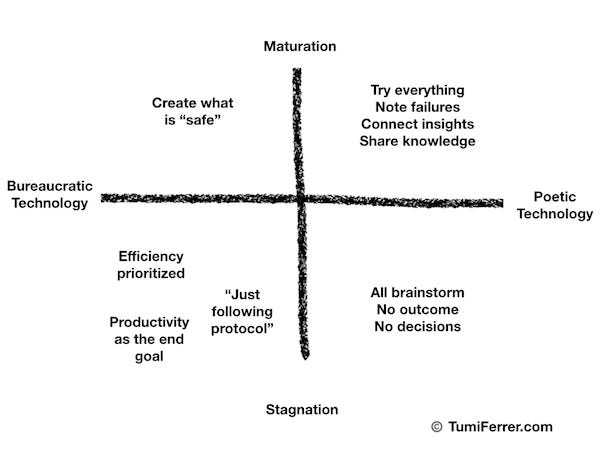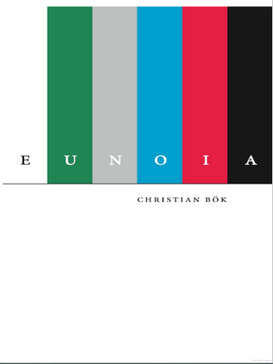Constraints
Self-restriction can be a good thing, unless it becomes a bottleneck
Hey friends,
I hope you’ve had a nice time during the holidays. It’s romjul here in Norway, which is what Norwegians call the time between christmas day and new year. Directly translated, “romjul” means “Space Christmas” 🤓
This post is loosely themed around constraints, or bottlenecks. Bottlenecks slow you down. They hurt productivity. But sometimes, when you set your own limits, it becomes a new creative source.
I’ve made a small constraint for myself in the way I will write future newsletters. I want to test out if it helps me in sharing more ideas and thoughts. My plan is to always have the same segments and limit myself to just a few items in each one. When all segments get filled, I have a newsletter ready, no matter when. Maybe my ADD brain responds more to this framing, rather than jumping back and forth between too tight or too loose restrictions.
If you’re reading this newsletter for the first time, welcome! You can read about it here and subscribe to future posts using the button below.
Hope you enjoy!
Blog post: In Search of Poetic Productivity
I’m digesting a fair amount of ideas in this article:
Poetic and bureaucratic technology (borrowed from David Graeber)
Spiritual Bypass, a new age method for coping with difficult challenges and emotions, which, when take too far, enters the realm of red pills, toxic positivity and eventually self destruction
I drew the 2x2 graph below to explain the how-to’s and why’s of productivity and how they interact and to better imagine what poetic productivity would look like (see top right corner).
I’ve had brief moments in every corner of this graph. At times of hyperfocus, I’ve spent more time fine-tuning my task management system than doing any creative work (bottom left). At other times I’ve poured ideas onto a note, exhausted myself and eventually gotten tired of the idea and archived it (bottom right). I’ve settled for easy solutions because I’ve know how to execute them, instead of grabbing the opportunity and try something new (top left). Poetic productivity, in my mind is somewhere in the top right corner and I’m taking the first steps into learning how to get there.
If you’d like to know more, click on the article to read further. I’m interested in hearing your thoughts if any of these topics resonate with you. Just hit reply to this email.
Theory of Constraints applied to coffee shops
I’ve regularly had to figure out how to widen bottlenecks in various coffee shops. Each coffee shop has its own individual challenges and there may be more than one bottlenecks. Maybe the ordering line is too slow. Or waiting for a coffee takes forever while food is ready in no time (or vice versa). The menu is confusing so you have to spend extra time explaining to the barista how you want your drink made. The coffee shop has dozens of potential bottlenecks that can severely hurt the business.
Identifying the narrowest bottleneck in the coffee shop is always a great start to improving the productivity. I wrote a thread about it a while ago but I’m tempted to write a longer piece on coffee shop constraints. To read the whole thread, click the tweet below.

I’ve been fortunate during the pandemic. There hasn’t been a slow day at work since I started at Talormade. In just seven months, we’ve opened 3 coffee shops. During that time I’ve trained close to two dozens baristas, many of them taking their first steps into the world of specialty coffee.
What I’ve seen as the teams got more comfortable behind the bar is all the unexpected places you can find bottlenecks and how easy it is to create new ones. You can prevent bottlenecks from happening as much as you can based on experience, design and engineering, but at the end of the day you need to feel the space with humans in it to properly draw out (dare I say exorcise?) what can slow you down.
Book Recommendation
Eunoia – Christian Bök
(Audiobook on SoundCloud, performed by the poet)
Speaking of constraints: Eunoia is a massive achievement in constrained writing. Each chapter is limited to a single vowel, meaning that in chapter “A”, for instance, you can only use words that have the vowel A in it, excluding all the other vowels. On top of that, Bök applies a few other rules, such as:
Each chapter needs to refer to the art of writing
Themes required in each chapter: "a culinary banquet, a prurient debauch, a pastoral tableau and a nautical voyage."
Each chapter’s text must include as many of the words available
Avoid repeating words as much as possible
Not using the letter “Y”
Listening to the book really gives a feeling that each vowel has it’s own personality, a texture, a DNA. It’s also just fun to realize that a book like this is even possible.
Coffee tip
This is a new segment I want to try out. It will be a mix of tips I’ve heard, or created out of habit, either at home or in a coffee shop environment. If you know someone who would benefit from getting coffee tips like this in the future, share this post using the button below.
The first coffee tip I want to share with you is about a feature in most automatic filter brewers that we rarely experiment with: The drip stopper.
You’ll find this feature also in pour-over methods like the Clever dripper or similar brewers where you can restrict or fully close the hole at the bottom of the brewer.
The drip stopper is the mechanism at the bottom of the filter holder that closes the hole where the brewed coffee exits on its way to the serving carafe. Its purpose is to prevent brewed coffee to drip when you remove the carafe from the coffee maker to pour yourself some coffee. The most common design includes a metal spring that closes the hole when you remove the carafe, but opens naturally when the carafe goes under the filter holder. You usually never notice it because the carafe is always under the filter holder from the start to the end of a brew.
Here is how I use the drip stopper to improve my brewing at home:
Start brewing with the filter holder closed until the water volume in the filter reaches about halfway up. (Optionally, stir the coffee sludge to even out the extraction.)
Open the filter holder and continue the brewing like normal.
Starting the brew with these extra steps gives the water more time in the beginning to blend properly with the entire mass of ground coffee, decreasing the chances of channelling and resulting in a higher and more even extraction (usually this translates to a more intense and richer flavor).
Let me know how this trick works out for you. If you have an idea for a coffee tip that I should cover, I’d love to hear it!
Articles I’ve enjoyed
🍫On Chocolate – Alicia Kennedy
A brilliant piece about how complex chocolate is, both as a food and as a cultural, historical and economic phenomenon. I read this thinking the whole time I could’ve just as easily ended up being a chocolate snob. This quote from the article could just as easily be about coffee:
Chocolate is an interesting food precisely because of how education-intensive it is: Will someone buy a $14 chocolate bar just because they like the taste of it? Not likely. It requires background information—it requires justification, despite the fact that most people in major urban centers wouldn’t blink at dropping that much money on one cocktail or glass of wine.
🧼 The Most Essential Job in a Restaurant – Kat Kinsman
Best article I’ve read about the importance of dishwashers in restaurant kitchens.
“People don't realize there's a person back there whose sole job it is to clean those glasses and make sure they're crystal clear. Generally, they're going to be the lower paid people, but if you're smart, you don't pay them super low. You want to try to give them a living wage and make sure you're able to keep them. Otherwise you're in the cycle of new people, new faces, paperwork, and training. They tend to be the lower side of the scale, for sure—and they tend to be immigrants”
Thanks for reading. If you want to reach out to me you can find me on Twitter. You can also reply directly to this email if something resonated with you.
Until next time 🖖


